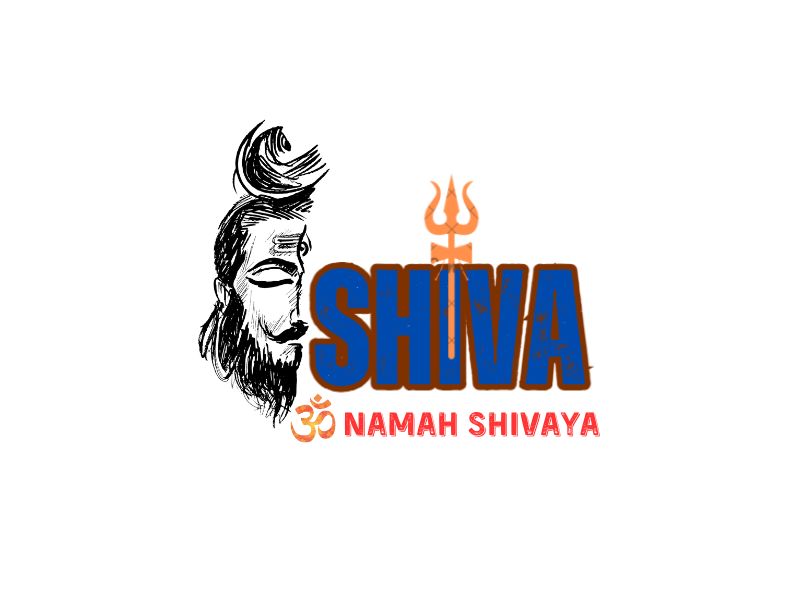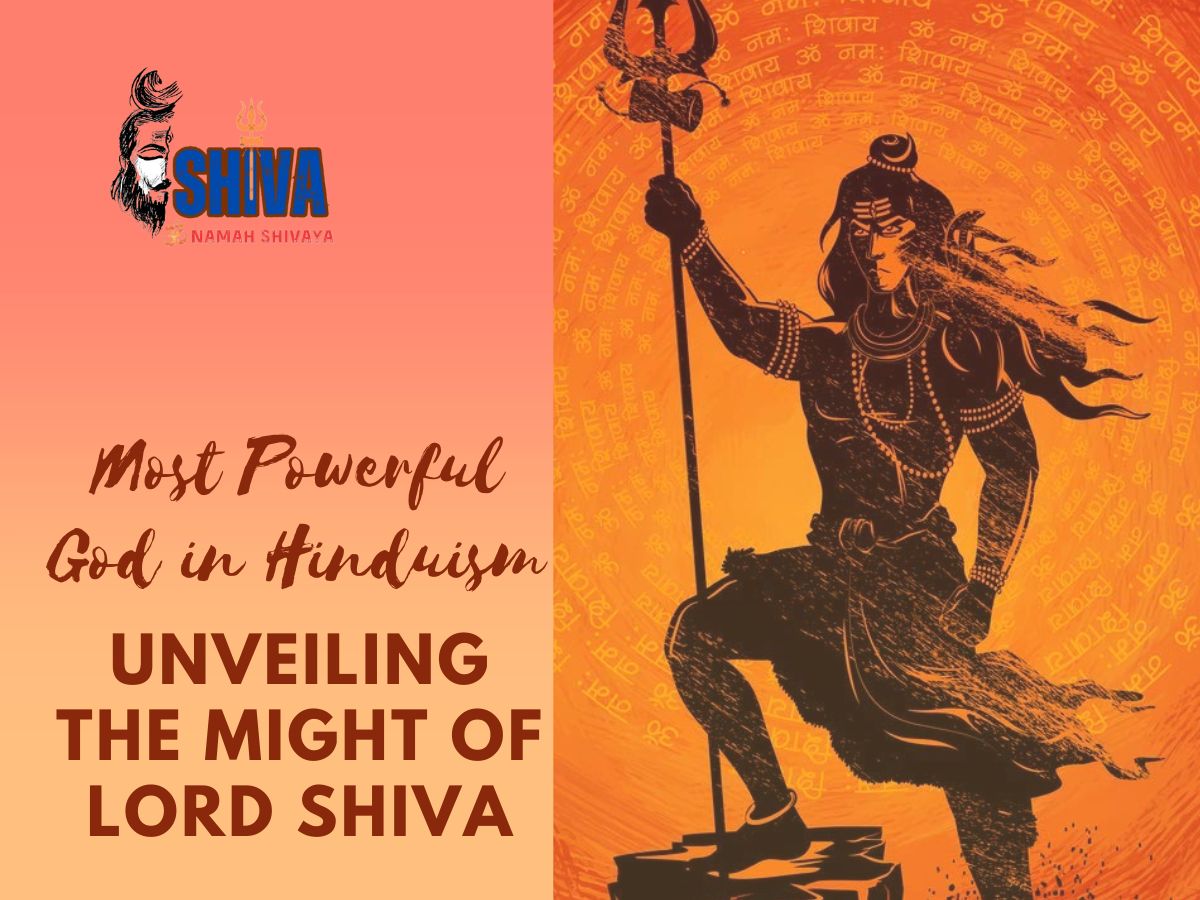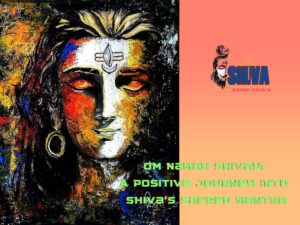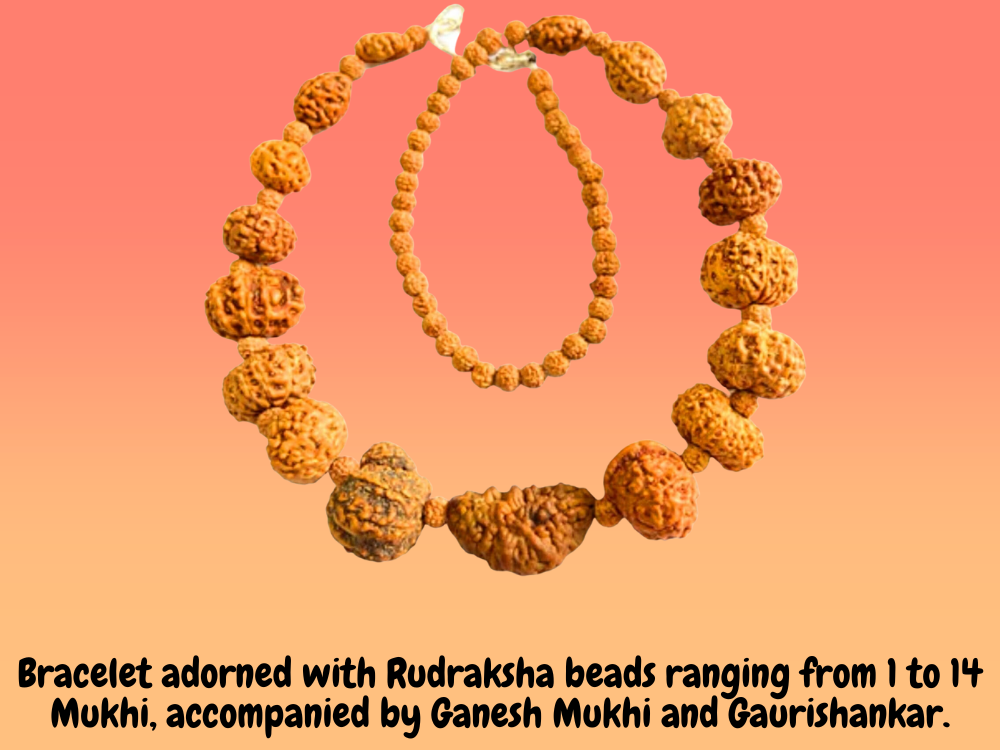
From 1 to 14 Mukhi Rudraksha Bracelet featuring the Most Powerful God in Hinduism Gauri Shankar, Ganesh Mukhi, and Savar Mukhi.
Benefits of Sarva Siddh Mala: This is a unique and extraordinary mala that holds the potential for universal use, without requiring astrological consultation. However, it is important for wearers of Rudraksha beads to adhere to a vegetarian lifestyle, as wearing Rudraksha involves following certain rituals. As per our research, Rudraksha beads are not suitable for individuals who consume alcohol or non-vegetarian food.
This mala carries the blessings of Lord Shiva himself; it can be considered an embodiment of his divine energy. This immensely powerful mala bestows favorable effects on health, wealth, career growth, foreign travel, and those aspiring for careers in fields like acting, modeling, and politics.
Revered as the Most Powerful God in Hinduism, Lord Shiva stands as an embodiment of strength, destruction, and creation, all intertwined in a cosmic dance of existence. In the vibrant tapestry of Hinduism, there exists an entity whose power transcends all realms, a deity whose significance resonates deeply across ages – Lord Shiva.
Heralding the Power of Lord Shiva
At the core of Hindu belief lies the recognition of Lord Shiva as the Powerful God, one who wields immense authority over the cycles of life and death. His form, adorned with the crescent moon and the serpents, symbolizes his command over nature and the cosmos. With ash smeared across his body, Lord Shiva signifies the ephemeral nature of material existence in the grand tapestry of hinduism.
The Enigmatic Dance of Creation and Destruction
Lord Shiva’s divine dance, the Tandava, is a cosmic spectacle that encapsulates the dual essence of his being. It embodies the timeless rhythm of creation, sustenance, and dissolution. This dance is not just a metaphor; it’s a rhythmic expression of the forces that govern existence. As we delve into the mystique of Lord Shiva’s dance, we uncover the profound layers of philosophy that underline his role as the Most Powerful God in Hinduism.
The Consort Parvati: The Harmony of Power
Beside Lord Shiva stands his eternal consort, Goddess Parvati, representing the feminine energy that balances his power. Together, they exemplify the intricate interplay between destruction and creation, a synergy that governs the universe’s ebb and flow. This divine partnership highlights the intricate nuances of power dynamics within hinduism.
Reverence and Rituals in Hindu Worship
In temples dedicated to Lord Shiva, devotees offer their reverence through intricate rituals and ceremonies. Maha Shivaratri, the great night of Lord Shiva, witnesses millions of devotees immersed in prayers and fasting. The fervent devotion displayed during these rituals echoes the recognition of Lord Shiva’s status as the Most Powerful God in Hinduism.
Modern Relevance and Spiritual Resonance
Beyond the ancient texts and legends, Lord Shiva’s essence permeates the contemporary landscape as well. In a world seeking balance and transformation, the teachings of Lord Shiva find relevance. The transcendental meditation and yogic practices, often attributed to Shiva, have gained global popularity, resonating with seekers irrespective of their cultural backgrounds. This speaks volumes about the timeless influence and universal appeal of my Lord Shiva.
Unveiling the Cosmic Significance
The epithet “Most Powerful God in Hinduism” isn’t just a lofty title; it encapsulates a deeper cosmic significance. Lord Shiva’s role as the destroyer of obstacles (Vighnaharta) and the harbinger of auspicious beginnings underscores his influence in the lives of believers. This power isn’t merely a display of strength, but a profound understanding of the interconnectedness of all things.

The INDIAN Ek Mukhi (One Face) Rudraksha holds profound holiness and auspiciousness, standing as one of the most exceptional Rudraksha beads discovered in the natural world. Encased in an elegant pendant crafted from Panch-Dhatu, the Rudraksha forms a graceful OM shape. The governing celestial body is the Sun. The pendant is fashioned from Panch Dhatu, a sacred and propitious metal chosen for its sanctity and significance.
The Eternal Wanderer and Ascetic
Lord Shiva’s portrayal as an ascetic, adorned in rudimentary attire, meditating in the lofty Himalayas, presents a contrast to his status as a Powerful God. Yet, it is this juxtaposition that makes him resonate with those who seek balance and enlightenment. His disinterest in material riches and his penchant for meditation exemplify the journey towards self-discovery, a journey deeply ingrained in the fabric of hinduism.
Scriptures and Wisdom: Nurturing the Devotee's Soul
The sacred texts of Hinduism, such as the Shiva Purana, delve into the narratives of Lord Shiva, his avatars, and his teachings. This repository of wisdom isn’t a mere collection of stories but a guide for navigating life’s complexities. Lord Shiva’s sagacious insights, often shared through his stories, provide devotees with practical knowledge and philosophical depth, reinforcing his position as the Most Powerful God in Hinduism.
Lord Shiva in the Pantheon: A Multifaceted Deity
While Lord Shiva holds the esteemed title of the Most Powerful God in Hinduism, he is far from a one-dimensional entity. His multifaceted nature embraces contradictory qualities, making him relatable to diverse human experiences. His serene yogic meditation coexists with his fiery destruction; his role as a benevolent protector stands alongside his fearsome avatar as Bhairava. This duality mirrors life’s intricacies, resonating with a broader audience beyond traditional believers.
Cultural and Artistic Resonance
Lord Shiva’s influence extends beyond spiritual realms to art, music, and culture. His depiction in various art forms, such as classical dance and intricate sculptures, showcases his profound impact on creative expressions. His cosmic dance, Nataraja, epitomizes the rhythm of creation and destruction, an emblematic portrayal that encapsulates his essence as the Most Powerful God in Hinduism.
Pilgrimage and Reverence: Nurturing Devotion
The pilgrimage to Lord Shiva’s sacred abodes is an integral aspect of devotees’ lives. Whether it’s the towering Kedarnath or the mystical Mount Kailash, these sites hold a spiritual allure that transcends physical distances. The act of undertaking these journeys, steeped in devotion, highlights Lord Shiva’s role as a guide for those on a quest for deeper understanding and connection.
In Search of Oneness: The Shiva Philosophy
Central to Lord Shiva’s teachings is the concept of oneness, the realization that all creation is interconnected. This philosophy, often expounded through his tales and symbols, invites seekers to look beyond divisions and embrace unity. This spiritual insight serves as a guiding light, illuminating paths toward self-realization and societal harmony.
Eternal Flame of Devotion
As we delve into the enigma of Lord Shiva, we unearth a reservoir of devotion that burns eternally. His presence isn’t confined to rituals or narratives; it resides in the hearts of countless believers who find solace, strength, and purpose in his divine embrace. This devotion isn’t bound by time, culture, or boundaries; it’s an eternal flame that continues to illuminate the souls of those who seek the Most Powerful God in Hinduism.
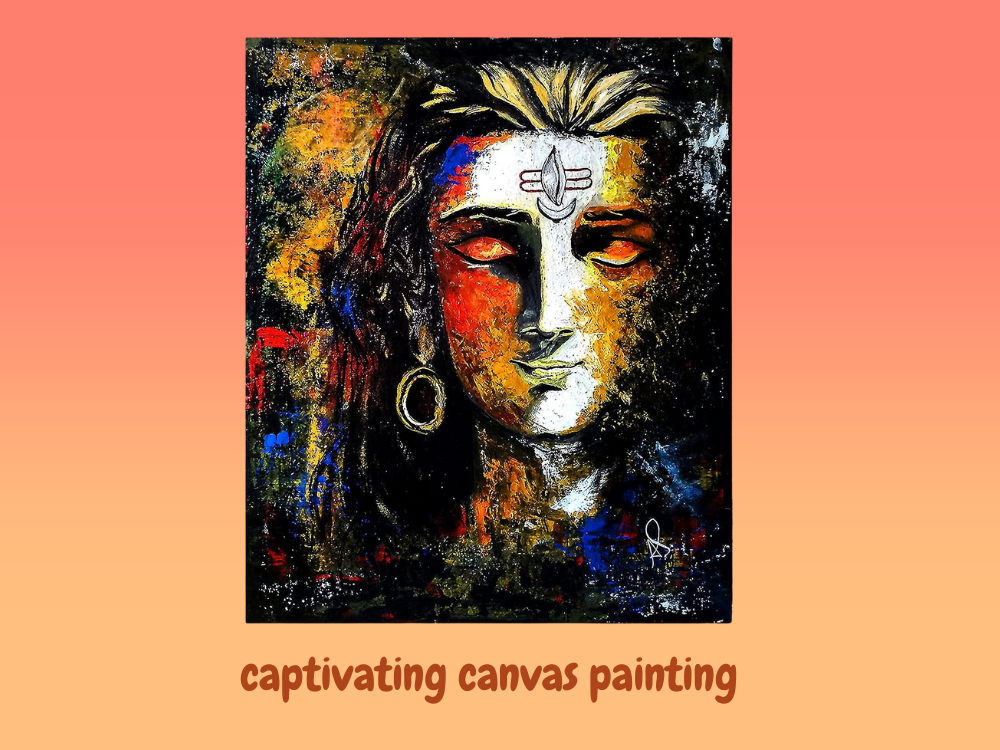
Enhance your living space with this exquisite canvas painting, adding a touch of beauty to your home decor.
Material – The artwork is imprinted onto “Artistic Cotton Canvas,” composed of 100% pure cotton. It features PVC/plastic-free composition, exceptional flexibility, a remarkable 370 GSM thickness, and a glossy finish. The canvas exhibits an ultra water-resistant quality, enabling easy cleaning with a soft damp cloth.
Standard & Premium Printing – Impressively detailed printing is achieved through non-toxic, oil-based, and eco-friendly colors. The application employs advanced technology using standard-level printing machines.
Conclusion: A Journey of Profound Revelation
In the grand narrative of hinduism, Lord Shiva emerges as an embodiment of power, wisdom, and transcendence. The journey through his myths, symbolism, and teachings unveils a tapestry woven with cosmic threads. As we contemplate his role as the Most Powerful God in Hinduism, we traverse the realms of creation, destruction, and spiritual evolution. The echoes of his might reverberate through time, inviting seekers to explore the boundless depths of existence and discover the divine within themselves.
FAQs About the Most Powerful God in Hinduism - Lord Shiva
Lord Shiva’s power extends beyond physical strength; it encompasses his role as the destroyer and creator of the universe. His ability to maintain cosmic balance through cycles of creation, preservation, and destruction establishes him as the embodiment of supreme power in Hinduism.
Lord Shiva’s mythology is replete with instances of his raw power and divine interventions. His cosmic dance, the Tandava, can bring forth earthquakes and celestial phenomena, underscoring his command over natural forces. His role in quelling the poison during the churning of the ocean showcases his benevolent might, protecting the cosmos from destruction.
Lord Shiva’s power isn’t limited to destructive aspects; it also manifests through his yogic practices. His deep meditation and ascetic lifestyle reflect his inner strength and control over his physical and mental faculties. His mastery over yoga and meditation symbolizes the ultimate power to harness the mind’s potential and achieve spiritual elevation.
In today’s fast-paced world, Lord Shiva’s teachings hold a mirror to the struggles of human existence. His philosophy of detachment, self-realization, and embracing change has gained renewed relevance. His depiction as a Powerful God who transcends the material realm resonates with those seeking inner peace and a deeper connection to the self.
Lord Shiva’s duality, encompassing both fierce destruction and serene meditation, teaches us the harmonious coexistence of opposing forces. It symbolizes the intricate balance of life, where growth emerges from destruction and creation emerges from chaos. Embracing the contradictions within ourselves and in the world around us can lead to greater understanding and personal evolution.
